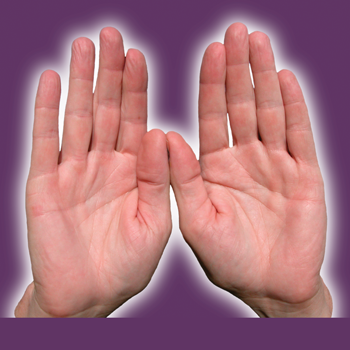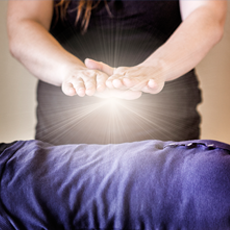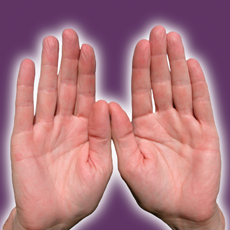by Ann Linda Baldwin, PhD
People who have given and/or received Reiki know, first hand, how energizing it feels and how one’s worries seem to melt away after a session. However, people who have not experienced, or even heard of Reiki may naturally be more skeptical, and may not want to venture into the unknown. What is really needed is scientific evidence showing exactly what Reiki can do to promote health and wellness. Fortunately, the Center for Reiki Research (CRR) has set up an easily accessible website (www.centerforreikiresearch.org) in order to promote people’s scientific awareness of Reiki. This site provides a list of evidence-based research published in peer-reviewed journals along with a critical summary of each study. The list is kept up to date and currently includes 33 studies. The summaries of the studies were produced by carefully analyzing the quality of each study in terms of experimental design, methodology, results, statistics, and conclusions, using a procedure developed by CRR named The Touchstone Process.
The following is a distillation of findings from the more robust of the studies (as scored ‘Very Good’ or ‘Excellent’ by The Touchstone Process in terms of the above criteria) that demonstrate positive physical effects of Reiki.
Probably the most commonly reported benefit of Reiki is that it reduces stress. One of the first places in the body that stress manifests itself is in the heart and circulation. Heart rate and blood pressure both increase during stress and these responses are caused by increased activity of sympathetic nerves in the heart. On the other hand, increased activity of the parasympathetic or vagal nerves causes the heart to relax. Studies have shown that Reiki can reduce the stress response of the heart in both humans and animals. Friedman et al (2010) found that when nurses gave Reiki to 12 patients recovering from acute coronary syndrome, a disease involving blockage of the coronary arteries, the vagal nerves became more active, indicating a relaxation effect, as reflected by changes in the heart rate variability. This was a good sign because medications that enhance vagal nerve activity, such as beta-adrenergic blockers, improve the outcomes of patients with this type of heart disease. So in this case Reiki was having a similar effect as a medicine that is a known effective therapy for heart disease. The increase in vagal nerve activity was statistically significant compared to the results from the groups of patients who listened to meditative music (13 patients) or just received standard care (12 patients). Unfortunately the study did not include a sham Reiki group, in which someone untrained in Reiki mimics the hand-positions of Reiki, and so we do not know whether just touching the patients, without giving Reiki, would have the same effect.
...there is preliminary scientific evidence that Reiki reduces stress, pain, depression and anxiety, and can help mild Alzheimer's patients to overcome their cognitive imparement to some degree.
Studies of Reiki on animals provide particularly robust data because the animals are all kept under the same controlled conditions and so variations in diet and lifestyle that are present in human studies are eliminated. This means that the results are easier to interpret unambiguously. Baldwin and colleagues (2006, 2008) showed that Reiki, compared with sham Reiki, significantly reduced the physiological effects of stress in rats. In previous experiments, Wilson and Baldwin (1998) discovered that their research rats were stressed by the noisy environment in which they were housed and that the stress was manifesting in the body as shown by cellular damage. Baldwin wondered whether giving the rats Reiki would (i) reduce their stress and (ii) heal the damage, and so she designed experiments to test this hypothesis. In one study (Baldwin et al, 2008), a Reiki practitioner sat in front of each of three cages and sent Reiki to the pair of rats inside each cage for 15 minutes every day for five days. Reiki significantly decreased the mean heart rate of the stressed rats by 6% on average, and sham Reiki had no effect. Neither Reiki nor shamReiki reduced blood pressure. One reason that Reiki reduced heart rate but not blood pressure could be that blood pressure depends on multiple factors, including heart rate, force of contraction of the heart, and the degree of contraction or relaxation of the blood vessels, so Reiki would have to affect all these factors in order for blood pressure to be reduced. It is possible that longer sessions of Reiki may be required to achieve these changes.
In the other study, Baldwin et al (2006), showed that the rats stressed by their noisy environment also had damaged blood vessels in the mesentery, the sheet of tissue that holds the intestine together. The damaged regions in these tiny blood vessels were leaky to a large protein, albumin, in the blood. Normally, albumin is contained in these blood vessels and does not leak out into the tissue. This condition is necessary in order for the correct balance to be obtained between water in the blood and water in the tissue. It is not known exactly how stress causes damage to blood vessels but it is probably linked to activation of nerves in the intestine, leading to release of neurotransmitters that may stimulate immune cells to release toxins. When four rats were given Reiki for 15 minutes a day for three weeks most of the leaks disappeared. Four rats that received sham Reiki also showed some reduction in the number and size of vascular leaks but it was not statistically significant. The experiment was repeated on two other groups of rats and a similar result was obtained. These experiments show that Reiki can work on animals, even rats, to reduce their stress and to heal the cellular damage mediated by the stress.
Another frequently reported benefit of Reiki is that it reduces pain. Vitale and O’Connor (2006) showed that Reiki significantly improved preoperative relaxation and reduced postoperative pain in women undergoing hysterectomies. The 12 women in the Reiki group received a 30-minute treatment immediately before surgery and 24 hours and 48 hours post surgery. The 10 women in the control group received standard care only. There was no sham Reiki group. Data were collected using the State component of the State-Trait Anxiety Inventory and a visual analog scale for pain measurement. The Reiki group reported significantly less anxiety pre-surgery and significantly less pain 24 hours post-surgery than the control group. Interestingly, the time duration of the surgery was shorter on average for the Reiki group (59 minutes) than the control group (72 minutes).
Chronically ill patients often not only feel pain, but also get depressed. Dressin and Singg (1998) demonstrated a significant reduction in the pain, depression, and anxiety experienced by chronically ill patients with a range of medical conditions who received Reiki compared to sham Reiki (two sessions per week for five weeks). In these experiments there were 12 men and 18 women per group. The men experienced a significantly greater reduction in depression than the women. These beneficial effects were still seen three months after completion of the Reiki treatments. Shore (2004) showed that 30 people needing treatment for mild depression or stress, and who received hands-on Reiki or distance Reiki once a week for six weeks, experienced significant reduction of mild depression and stress and the beneficial effects lasted for at least one year following treatment. The measures used in this experiment were the Beck Depression Inventory, the Beck Hopelessness Scale, and the Perceived Stress Scale. The 15 patients in the sham distance Reiki group who were told they would receive distance Reiki but actually did not, reported no significant change in their depression or stress.
Finally, people who regularly use Reiki often find it helps them think more clearly and improves their problem-solving capabilities. Although no research has yet been published confirming these benefits in healthy people, Crawford et al (2006) demonstrated that four 30-minute Reiki treatments, once a week, significantly improved cognition skills in 12 elderly patients with mild Alzheimer disease or mild cognitive impairment compared to the 12 patients who received no treatment. The measures used in this study were the Annotated Mini-Mental State Examination and the Revised Memory and Behavior Problems Checklist. Once again, the study did not include a sham Reiki group, and so we do not know the role that touch and personal attention played in helping the patients regain some of their cognitive skills.
Overall, although the studies are small and some of them do not address the question of Reiki versus touch, there is preliminary scientific evidence that Reiki reduces stress, pain, depression and anxiety, and can help mild Alzheimer’s patients to overcome their cognitive impairment to some degree. To find out more about these studies, and others, you can visit the CRR website, www.centerforreikiresearch.org, or read our review, The Touchstone Process. An Ongoing Critical Review of Reiki in the Scientific Literature (Baldwin et al, 2010).
References
Baldwin, A.L. and G.E. Schwartz. 2006. Personal interaction with a Reiki practitioner decreases noise-induced microvascular damage in an animal model. Journal of Alternative and Complementary Medicine 12(1):15–22.
Baldwin, A.L., C. Wagers, and G.E. Schwartz. 2008. Reiki improves heart rate homeostasis in laboratory rats. Journal of Alternative and Complementary Medicine 14 (4):417 – 422.
Baldwin, A.L., A. Vitale, E. Brownell, J. Scicinski, M. Kearns,. and W. Rand. 2010. The Touchstone Process. An Ongoing Critical Review of Reiki in the Scientific Literature. Holistic Nursing Practice 24(5):260 – 276.
Crawford, S. E., V.W. Leaver, and S.D. Mahoney. 2006. Using Reiki to decrease memory and behavior problems in mild cognitive impairment and mild Alzhemier’s Disease. The Journal of Alternative and Complementary Medicine 12(9):911 – 913.
Dressin, L.J. and S. Singg. 1998. Effects of Reiki on pain and selected affective and personality variables of chronically ill patients. Subtle Energies and Energy Medicine 9(1):53 – 82.
Friedman, R.S.C., M.M. Burg, P. Miles, F. Lee, and R. Lampert. 2010. Effects of Reiki on autonomic activity early after acute coronary syndrome. Journal of the American College of Cardiology 56:995 – 996.
Shore, A. G. 2004. Long term effects of energetic healing on symptoms of psychological depression and self-perceived stress. Alternative Therapies in Health and Medicine 10(3):42 – 48.
Vitale, A.T. and P.C. O'Conner. 2006. The effect of Reiki on pain and anxiety in women with abdominal hysterectomies. Holistic Nursing Practice 20(6):263 – 272.
Wilson, L.M. and A.L. Baldwin. 1998. Effects of environmental stress on the architecture and permeability of the rat mesenteric microvasculature. Microcirculation 5(4):299–308.
Ann Linda Baldwin, PhD. Ann is a Research Professor of Physiology and Psychology at the University of Arizona and is Director of “Mind-Body-Science” (www.mind-body-science.com). She obtained her Bachelors degree in Physics from University of Bristol, UK, her Masters degree in Radiation Physics from University of London, UK and her PhD in Physiology from Imperial College, University of London. Her research focuses on the deleterious physiological effects of mental and emotional stress and how these outcomes may be minimized. She is currently exploring the efficacies of Reiki and of Biofeedback techniques in promoting sympatho-vagal balance, as indicated by analysis of heart rate variability, and thereby reducing the damaging effects of stress. She is also testing whether these techniques enhance mental, emotional and physical performance both in Parkinson’s patients and in otherwise healthy individuals.
This article appeared in the Fall 2011 issue of Reiki News Magazine.







